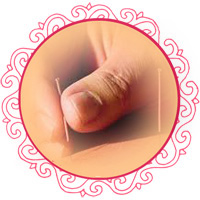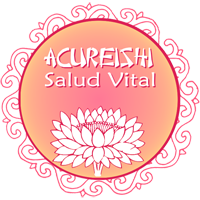
Acupuncture (the lat. needle, needle (noun), y Hq, puncture (verb)) is a technique of Traditional Chinese medicine which involves the insertion and manipulation of needles at the body with the aim of restoring health and well-being in the patient. Acupuncturists, Also widely used technique for treating pain. The definition and characterization of these points, is currently standardized by the World Health Organization (WHO), although not completely consistent with the pattern of traditional points.1
It is believed that acupuncture originated in China, and is possibly the practice most commonly associated withTraditional Chinese medicine. Different types of acupuncture (Japanese, Korean, and classical Chinese acupuncture) currently practiced and taught worldwide.
According to the Chinese conception, vital energy (ch’í, the which) flows through the body along meridians, canaleso roads, Chinese king called. The number of ordinary king is correlative to the twelve organs, plus two permanent extraordinary vessels: the conception (in the front middle body line), and glass Governor (in the dorsal midline body), also called the extraordinary.
En total, TCM identifies twelve channels or main communication routes that correspond to the vital organs of the human body: lungs, intestine, small intestine, base–pancreas, heart, kidneys, bladder, cardiovascular, gallbladder, liver, glass of conception, glass ruler and triple heater.
TCM distinguishes bodies of viscera: different organs of the viscera by the fact that the mass lesion ablation or viscera not cause the immediate death, while ablation or massive injury classified as organs involves the almost immediate death individual; so the heart is classified as organ, and stomach and viscera.
By inserting fine needles into specific points or resonators (called in Chinese xue) each meridian seeks to balance energy in the body Upset that governs. The disorder may be caused by the incidence of both external and internal factors that can lead to disease. Traditional Chinese theory believes that the disease is an imbalance of the two conditions for such ch'i: the yin mode, mode and yang (see yin-yang); operative on acupuncture points try to rebalance the energy, stimulating either at points, or, on the contrary- depression in producing these.
Experts use acupuncture pulsología as a method of diagnosis: according to this system, each organ and each would have a specific keystroke viscera in three modes (superficial, mid and deep).
Acupuncturists claim that acupuncture is suitable for treating a wide range of pathologies, emphasizing its use in hernia discal, allergies, inflammatory processes or infections influenza, among other conditions, Importantly it is also used as an analgesic, and even to reduce pain in surgical procedures.2 In return, the World Health Organization (WHO) only recognizes his success as an analgesic and vomiting problems.3
Acupuncture is a medical practice in China for more than two millennia, still to date one of the main components of Traditional Chinese Medicine, that is the medicine that has more patients today; in Europe the rudiments and reports of acupuncture practices seem to have begun in the mid- XVIII century; at XIX century medical German Tree Scheidt independently devised a therapy similar to Chinese acupuncture. To this therapy has been known as baumscheidtismo.
Now, acupuncture is offered as a health benefit, within national health systems in China, Vietnam and Cuba. The World Health Organization (WHO) indicates that acupuncture should only be done under supervision of a licensed physician who has completed advanced training in Acupuncture and it is contraindicated in pregnancy, emergency medical and surgical conditions, malignant tumors and bleeding disorders.





